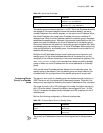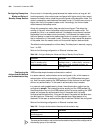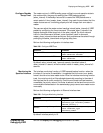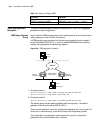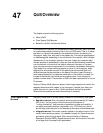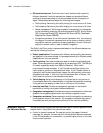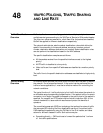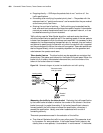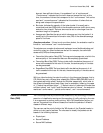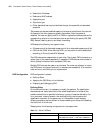
47
QOS OVERVIEW
This chapter covers the following topics:
■ What Is QoS?
■ Three Types of QoS Services
■ Benefits of QoS for the Network Service
What Is QoS? In the traditional IP network, all the packets are treated identically. Each router has
to handle these packets a following first in first out (FIFO) policy. That is, it makes
best effort to transmit the packets to the destination without considering the
throughput, delay, jitter, drop rate of the packets, etc. This may be advantageous
or disadvantageous, depending on the conditions of the network. With the rapid
development of the computer networks, the voice, image, and important data
that are sensitive to the bandwidth, delay and jitter are simultaneously transmitted
over the network, which enrich the network resources. However, at the same
time, there are more strict requirements for the network transmission data quality.
They expect that a certain service guarantee in terms of the throughput, delay,
delayed jitter, and packet loss ratio of the packets can be obtained, and that
different services may be provided on the basis of the client types. One way to
solve these problems is to increase the bandwidth of the network, however, the
increase in bandwidth is so limited and so expensive that it only relieves this
problem to some extent. The provision of QoS is the basic requirements for future
IP networks.
Quality of Service (QoS) refers to a series of technology integrations to obtain the
expected service level with respect to the throughput, delayed jitter, delay, and
packet loss ratio for users. In short, QoS is the network service that provides
different service qualities that meet various kinds of demands.
Three Types of QoS
Services
Generally, the services of QoS are usually divided into the following three types:
■ Best-effort service: This is the default service model provided by IP. It uses a
FIFO (first in, first out) queue, offers the most primitive service of
"routing-forwarding", and provides no guarantee for delay and reliability. It
can satisfy most early networks' requirement (e.g., FTP, E-mail), but cannot
provide high quality services for the developing voice and multimedia services.
■ Integrated service: This model is usually applied on the edge routers. In this
model, before sending a packet, it is necessary to apply for network resource
and service quality through signal. After the confirmation of Resource
Reservation Protocol (RSVP), the packets can be sent, and the size of the traffic
is not larger than the preset traffic parameters.



